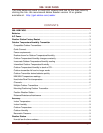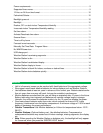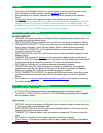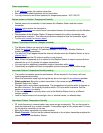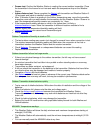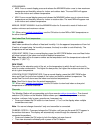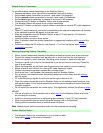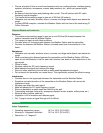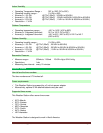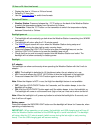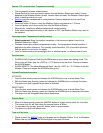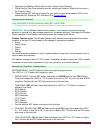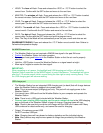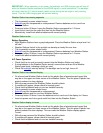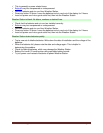
La Crosse Technology, Ltd. Page 4
Power requirements
2-AA batteries power the outdoor transmitter.
We recommend alkaline batteries for the transmitter.
You may choose to use lithium batteries for temperatures below - 20°F/-28.8°C.
Dashes shown for Outdoor Temperature/Humidity
Dashes means the connection is lost between the Weather Station and the outdoor
transmitter.
Batteries often resolve the connection.
Distance/Resistance can cause loss of connection between the transmitter and the Weather
Station.
Reorientation of the Weather Station 90 degrees towards the outdoor transmitter may
provide better reception. This allows more antenna surface to face the transmitter signal.
Try the quick connect or factory restart.
Outdoor Temperature/Humidity changes constantly
The Weather Station can read up to three outdoor transmitters.
Check the channel indicator. If it switches between 1, 2 or 3, your Weather Station is
reading additional transmitters.
The word AUTO will appear below the channel indicator when the Weather Station is set to
channel scroll.
Press and release the CH button to settle on one channel.
Note: When first powered up it is natural for the Weather Station to search across all three
channels for up to 15 minutes for outdoor transmitters.
You may have an additional compatible outdoor transmitter within range.
Occasionally a neighbor will have a compatible outdoor transmitter that is within range.
Inaccurate Outdoor Temperature/Humidity reading
The outdoor transmitter reads the environment. When mounted in the home it will read
inside temperature/humidity.
When the transmitter reads high during the day but not at night it is a positioning problem.
Side-by-side test: Bring the outdoor transmitter in the house and place it next to the
Weather Station for 2 hours.
Compare indoor and outdoor temperature. The temperatures should be within 4 degrees to
be within tolerance. The humidity should be within 10% to be within tolerance. See the
section on accuracy for details.
If the transmitter reads correctly when next to the Weather Station then try a different
location outside.
Look for heat sources such as sunlight, door or window frames, or reflected heat.
Intermittent Outdoor Temperature/Humidity
RF (radio frequency) communication may come and go occasionally. This can be normal in
some environments (e.g. moister climates). If transmitter signal is lost, please wait 2-4 hours
for the signal to reconnect on its own.
Move the outdoor transmitter to a closer location.
Check Channels: Confirm that the channel selected on the outdoor transmitter matches the
channel shown on the Weather Station.



